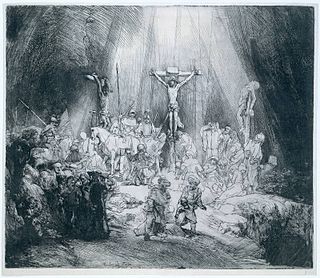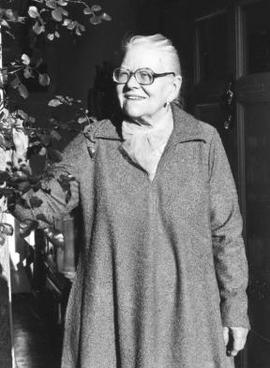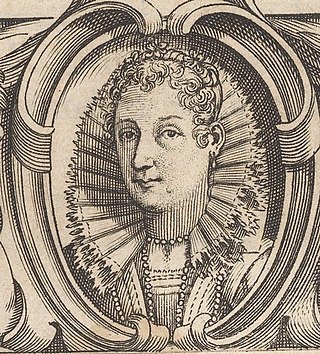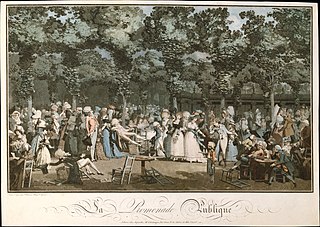
François Boucher was a French painter, draughtsman and etcher, who worked in the Rococo style. Boucher is known for his idyllic and voluptuous paintings on classical themes, decorative allegories, and pastoral scenes. He was perhaps the most celebrated painter and decorative artist of the 18th century.

Andrea Mantegna was an Italian painter, a student of Roman archeology, and son-in-law of Jacopo Bellini.

Lucas van Leyden, also named either Lucas Hugensz or Lucas Jacobsz, was a Dutch painter and printmaker in engraving and woodcut. Lucas van Leyden was among the first Dutch exponents of genre painting and was a very accomplished engraver.

Jacopo Caraglio, Giovanni Jacopo Caraglio or Gian Giacomo Caraglio known also as Jacobus Parmensis and Jacobus Veronensis was an Italian engraver, goldsmith and medallist, born at Verona or Parma. His career falls easily into two rather different halves: he worked in Rome from 1526 or earlier as an engraver in collaboration with leading artists, and then in Venice, before moving to spend the rest of his life as a court goldsmith in Poland, where he died.

An old master print is a work of art produced by a printing process within the Western tradition. The term remains current in the art trade, and there is no easy alternative in English to distinguish the works of "fine art" produced in printmaking from the vast range of decorative, utilitarian and popular prints that grew rapidly alongside the artistic print from the 15th century onwards. Fifteenth-century prints are sufficiently rare that they are classed as old master prints even if they are of crude or merely workmanlike artistic quality. A date of about 1830 is usually taken as marking the end of the period whose prints are covered by this term.

Hieronymus Cock, or Hieronymus Wellens de Cock was a Flemish painter and etcher as well as a publisher and distributor of prints. Cock is regarded as one of the most important print publishers of his time in northern Europe. His publishing house played a key role in the transformation of printmaking from an activity of individual artists and craftsmen into an industry based on division of labour. His house published more than 1,100 prints between 1548 and his death in 1570, a vast number by earlier standards.

Joan Hassall was a wood engraver and book illustrator. Her subject matter ranged from natural history through poetry to illustrations for English literary classics. In 1972 she was elected the first woman Master of the Art Workers' Guild and in 1987 was awarded the OBE.

Sister Plautilla Nelli (1524–1588) was a self-taught nun-artist and the first ever known female Renaissance painter of Florence. She was a nun of the Dominican convent of St. Catherine of Siena located in Piazza San Marco, Florence, and was heavily influenced by the teachings of Savonarola and by the artwork of Fra Bartolomeo.

Maria Luisa Caterina Cecilia Cosway was an Italian-English painter, musician, and educator. She worked in England, France, and later Italy, cultivating a large circle of friends and clients, mainly as an initiate of Swedish and French Illuminism and an enthusiastic revivalist of the Masonic Knights Templar.

Isabella Parasole was an Italian engraver and woodcutter of the late-Mannerist and early-Baroque periods.
Events from the year 1568 in art.
Domenico Cunego was an Italian printmaker.
William Henry Mote (1803–1871) was a British stipple and line engraver, primarily known for his portraits. He produced etchings for reference books, as well as original etchings. Mote became a member of the Royal Academy in his twenties and his portraits hang in the National Portrait Gallery, London.

Michael Vandergucht (née Michiel van der Gucht; c. 1660 – 16 October 1725) was a Flemish engraver and painter who worked for most of his career in England. He engraved portraits, book illustrations, and architectural prints and painted portraits.

Coenraad Lauwers was a Flemish engraver, etcher and print seller. He was mainly active as a reproducer of works of leading Antwerp painters.

Eufrasia Burlamacchi (1482–1548) was an Italian nun who practiced the art of manuscript illumination.

Arnold van Westerhout or Arnoldo van Westerhout was a Flemish printmaker, painter, draughtsman, publisher and printer. He trained in Antwerp but mainly worked abroad, and in particular in Italy. He settled in Rome where he was a prominent printmaker and publisher. The artist is less known for his paintings, which covered religious and genre subjects, than for his work as a printmaker and publisher.
Nellie Marcia Lane Foster later Marcia Jarrett, (1897–1983), was a British artist notable as a printmaker, portrait painter and book illustrator.

European printmaking in the 18th century grew greatly in quantity, and generally had high levels of technical skill. But original artistic printmaking declined, with reproductive prints becoming the majority. Many printmakers mixed intaglio printing techniques on the same plates with great skill. The generally reduced level of artistic creativity in printmaking changed at the end of the century with the great print series of Goya, whose career stretched into the 1820s but is all covered here. Goya is usually taken as the end of the old master print era, to which the 18th century added relatively little.




















